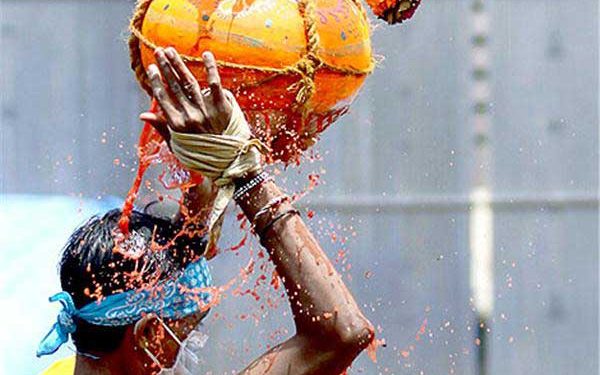Shivaji Mohinta
“Dahi handi” is one of the most popular Hindu festival sports practiced in India during the occasion of Krishna Janmashtami. This coincides with the birthday of Lord Krishna and is celebrated with gaiety in several parts of the country.
On several street locations, a handi (earthen pot) filled with dahi (yoghurt) is hung at a difficult height and a human pyramid is formed to climb and reach the top to break the pot. It is an adventure sport which draws lots of onlookers and supporters. The winning teams are duly rewarded at the end of the event.
There are some vital lessons that can be learnt from this traditional sport, which holds good for the corporate or business world.
Goal setting: The handi/pot is located at a height and participants have to reach it. Similarly, in an organisation the goal should be well-defined, communicated and transparent to all the key stakeholders. Physically and mentally the goal needs to be embedded in every team member’s heart and mind so that they are duly aligned and committed to achieve it.
Nothing happens in a vacuum. Every activity has its share of obstacles, hurdles and deterrents. During the ‘dahi handi’ sport, public pour water on the participants to stop their progress. In the business world we often face competition, challenges both internally and externally in realising our goal
Stretched target: The handi is placed at a significant height above the ground level which is not very easy to reach, but nonetheless it is achievable. Likewise, in the business world in order to derive maximum efficiency of the resources targets are always stretched. One can separate the “performers” and the “also rans” when a stretched target is conquered. There is a sense of accomplishment and greater satisfaction once such targets are achieved.
One team-one goal: This sport requires tremendous team effort. No single individual can achieve the goal even if the person is a super-star performer. All the team members have to contribute effectively and efficiently in reaching the top position. Non-alignment can shatter the dreams of scaling the height!
Right man at the right place: In ‘dahi handi’, a human pyramid is formed. The lowest level (or the base layer) often consists of sturdy people (each participant is referred to as Govinda) who can bear a strong load. The middle layer comprises of participants who possess a high degree of focus and balancing skills. The one who climbs to break the pot is usually a light weight individual (generally a child). In any successful organisation this aspect of hiring the right talent and deploying them at the right positions is significant.
Develop the right competencies: – The key success factor is load bearing ability and balancing skills amongst all the participants. Sufficient practice is required to develop these skills. Therefore, imparting the right training & knowledge to the employees of the organization can hardly be over-emphasized.
Inter-departmental co-ordination: All the participants need to perform in a well-orchestrated manner lest the pyramid falls apart. This is where inter-dependency and mutual support is required. When compared to a corporate organisation inter-departmental co-ordination, understanding and empathy are some areas that can never be ignored.
Competition/obstacles: Nothing happens in a vacuum. Every activity has its share of obstacles, hurdles and deterrents. During the ‘dahi handi’ sport, public pour water on the participants to stop their progress. It makes them slip and fall down, thereby the pyramid collapses. In the business world we often face competition, challenges both internally and externally in realising our goal. Right training, skills, experience and fluid intelligence helps one to overcome such roadblocks, manage those situations and eventually emerge as a winner.
Celebrate small wins: When the blocks of the pyramid are formed the team is cheered and kept continuously motivated to take the next step. That is a fuel which keeps them going. We need to celebrate success in a small way to be motivated and prepare ourselves for the next bigger goal.
Devise creative means: During his childhood Lord Krishna was so fond of milk products that he used to steal them not only from his house, but also from neighbours. They thought of storing these dairy products out of reach of Sri Krishna and prevent him from stealing them. But he devised creative ways to reach to the pot. Similarly, we need to think out-of the box and devise creative methods to reach our goal. Such lateral thinking needs to be encouraged, practiced in a professional organization.
Learn from failures quickly: Each team is given three attempts in this sport. Each failed attempt is a learning experience for the next. In real world, it is important how quickly we learn from our mistakes, re-group ourselves and reach our destination. That is what separates the winner from the rest
Distribution of earnings: The winning teams are given good prize money from the sponsors. This is a team sport and all members are equally important to the final success. This calls for the distribution of the earnings in an unbiased manner. We need to reward and recognise all the employees in an impartial manner as per their roles to keep them charged for the next journey!
In our work sphere, we regularly set sight and attempt to reach the pot which is hung at an “out-of reach” height. We are successful sometimes and sometimes not, but the journey continues like this traditional sport.
The author is a sales & marketing professional & can be reached at shiv_9807@hotmail.com






































